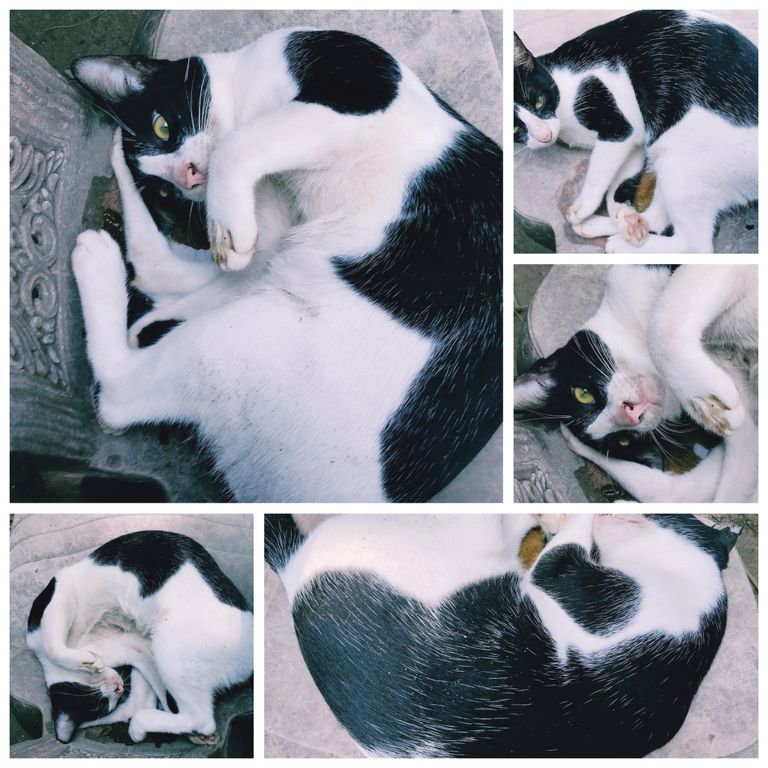
The Islamic tradition offers guidance on many aspects of life, including the treatment of animals.
Cats, in particular, hold a special place in Islamic teachings. This is evident from various hadiths—sayings and actions of the Prophet Muhammad (PBUH)—that provide insights into how Muslims should care for and treat animals, specifically cats. In this blog, we will explore what hadiths say about keeping cats, the treatment of animals in general, and the moral lessons that can be drawn from these teachings.
The Significance of Cats in Islamic Tradition
Cats are regarded with a sense of affection and respect in Islamic culture. The Prophet Muhammad (PBUH) was known to have a great fondness for cats, and there are many stories from his life that demonstrate the kindness and compassion he showed toward them. This affection is not just personal but extends into the broader teachings of Islam, which emphasize kindness to all creatures.
The Story of Muezza
One of the most famous stories about the Prophet Muhammad (PBUH) and cats involves his beloved cat, Muezza. It is said that one day when the Prophet was called to prayer, he found Muezza sleeping on the sleeve of his garment. Instead of disturbing the sleeping cat, the Prophet gently cut off the sleeve of his garment and left the cat to rest peacefully. This story is often cited as an example of the Prophet's love for animals and his respect for their comfort and well-being.
Hadith on Cats and Animal Welfare
There are several hadiths that specifically address the treatment of cats and other animals. One well-known hadith states:
"A woman was punished in Hell because of a cat which she had confined until it died. She did not give it to eat or drink when it was confined, nor did she free it so that it might eat the insects of the earth."
This hadith emphasizes the importance of treating animals with kindness and ensuring their basic needs, such as food and water, are met. The woman’s mistreatment of the cat led to severe punishment in the Hereafter, illustrating that cruelty toward animals is not only frowned upon but can have serious spiritual consequences.
Another hadith emphasizes the rewards of treating animals kindly. It narrates the story of a man who found a thirsty dog and gave it water to drink. The Prophet Muhammad (PBUH) said that because of this kind act, the man’s sins were forgiven. This story, while not about a cat, reinforces the general Islamic principle of compassion toward all living beings.
Islamic Principles of Animal Care
Islamic teachings extend beyond just cats to include all animals. The Qur’an and hadiths emphasize that animals are part of God's creation and that humans are stewards of the earth, responsible for the welfare of all creatures. The Prophet Muhammad (PBUH) advocated for the humane treatment of animals, which includes providing them with adequate food, water, and shelter, and not subjecting them to unnecessary harm or suffering.
Basic Principles for Keeping Cats
Based on hadiths and Islamic teachings, the following principles can be drawn for those who wish to keep cats as pets:
- Kindness and Compassion: Cats, like all animals, should be treated with kindness. This includes being gentle with them and ensuring they are not subjected to harm or discomfort.
- Providing for Their Needs: Just as humans have needs, so do animals. Cats require food, water, shelter, and care. Neglecting these needs can be considered sinful in Islamic tradition.
- Freedom to Roam: Islamic teachings emphasize that animals should not be confined in a way that causes them distress. Cats should be allowed to roam and explore their environment freely, as long as it is safe for them to do so.
- Cleanliness: Cats are naturally clean animals, and Islamic teachings emphasize cleanliness as an important aspect of faith. The Prophet Muhammad (PBUH) is reported to have said that cats are not impure, and it is permissible to use water from which a cat has drunk.
- No Overburdening: Islam encourages moderation in all aspects of life, including pet ownership. A person should only keep as many pets as they can responsibly care for. Overburdening oneself with more pets than one can manage may lead to neglect, which is discouraged in Islam.
Moral and Spiritual Lessons from Caring for Cats
The hadiths about cats and animal welfare offer several moral and spiritual lessons that go beyond simply caring for a pet.
- Responsibility Toward Creation
Islam teaches that humans are stewards of the Earth, and this stewardship extends to all living creatures. Caring for animals, including cats, is a way of fulfilling this responsibility. By ensuring the well-being of animals, humans show gratitude to God for His creation and demonstrate their understanding of the interconnectedness of all life.
- Compassion as a Virtue
The kindness shown to animals, as highlighted in the hadiths, is a reflection of the broader Islamic principle of compassion. Compassion is a central value in Islam, not only toward fellow humans but also toward all creatures. Caring for cats, therefore, is a means of cultivating this virtue and embodying the teachings of Islam in everyday actions.
- Awareness of Accountability
The story of the woman punished for her mistreatment of a cat serves as a reminder of the accountability that every Muslim bears for their actions. Islam teaches that all actions, big or small, are recorded and will be accounted for in the Hereafter. The treatment of animals, as seen in this hadith, is not exempt from this. Thus, keeping a cat or any pet is not just a matter of personal enjoyment but comes with a moral responsibility that will be judged by God.
Conclusion
The hadiths about cats highlight the importance of kindness, compassion, and responsibility toward animals in Islamic teachings. Cats, in particular, hold a special place in Islamic tradition, as demonstrated by the Prophet Muhammad’s (PBUH) affection for them and the guidance he provided on their care. Keeping a cat in Islam is not merely a personal choice but a moral responsibility that comes with the expectation of proper care, compassion, and respect for the animal’s needs.
In a broader sense, the Islamic approach to animal care reflects a holistic worldview in which all living beings are interconnected and deserving of compassion. By adhering to these teachings, Muslims can ensure that their treatment of animals aligns with the ethical and spiritual principles of Islam, thus contributing to a more just and compassionate world for all of God’s creatures.
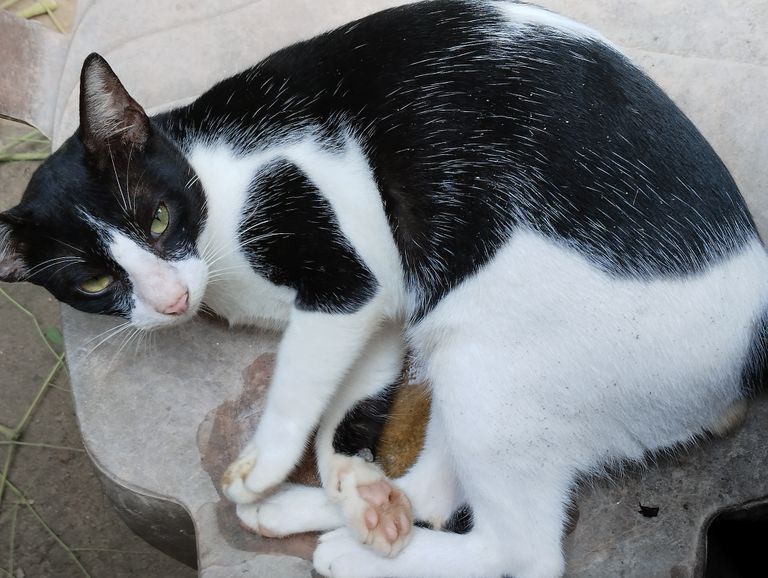
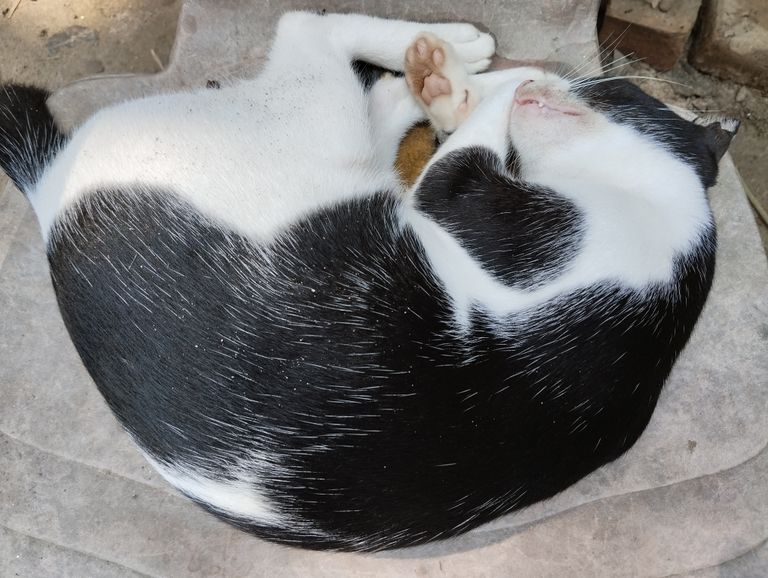
Benefits of Keeping Cats as Pets
Cats have been adored as pets for centuries, known for their independent nature, elegance, and ability to form strong bonds with humans. Owning a cat can be a rewarding experience that offers a host of benefits, both physical and emotional. From reducing stress to companionship, cats are not just pets, but often members of the family. In this blog, we’ll explore the numerous advantages of having a cat in your life.
- Stress Reduction and Emotional Support
One of the most significant benefits of having a cat is the reduction of stress and anxiety. The act of petting a cat is incredibly soothing, releasing endorphins in the brain that help reduce tension and promote relaxation. Many people find that the soft purring of a cat can have a calming effect, often likened to a form of meditation.
For individuals suffering from anxiety, depression, or loneliness, cats can be a source of emotional support. Their presence and quiet companionship often provide comfort during tough times. Studies have shown that interacting with pets, including cats, can increase levels of serotonin and dopamine, which help regulate mood and create feelings of happiness.
- Low Maintenance
Compared to other pets, cats are relatively low maintenance. They don’t need to be taken for daily walks like dogs, and they tend to be very independent. Cats are excellent at grooming themselves, and their litter box habits make them easier to manage in small apartments or homes without yards.
Additionally, cats are known for being able to entertain themselves for extended periods. With a few toys or a sunny windowsill, cats can stay content while their owners are at work or busy with other tasks. This makes them ideal pets for people with busy lifestyles who still want the companionship of an animal.
- Pest Control
Cats are natural hunters, and their presence alone can act as a deterrent to pests like mice, rats, and insects. Many cat owners have reported a significant decrease in unwanted pests in their homes due to their cat’s hunting instincts. Even if a cat is not actively hunting, their scent can discourage rodents from entering the house.
This pest control benefit is particularly useful for homes located in rural areas or older buildings where pests are more common. Not only do cats help keep homes free of pests, but they do so without the need for harmful chemicals or traps.
- Improved Heart Health
Studies have suggested that owning a cat can actually improve heart health. Research shows that cat owners are less likely to suffer from heart attacks and strokes. This could be attributed to the calming presence of cats, which helps lower blood pressure and reduce stress levels — both significant factors in cardiovascular health.
In fact, one study conducted over a 10-year period found that people who owned cats had a 30% lower risk of dying from a heart attack compared to non-cat owners. The calming influence of a cat could literally be a lifesaver.
- Companionship Without Overwhelm
While dogs can demand constant attention, cats provide companionship without overwhelming their owners with the same level of dependency. Cats are content to curl up next to you while you work, read, or watch TV, offering quiet and peaceful company. They don’t need as much active engagement, making them perfect for individuals who want the presence of a pet without the demands that come with some other animals.
This makes cats excellent companions for the elderly, individuals with physical disabilities, or those who live alone. The companionship of a cat can help alleviate feelings of loneliness, providing a sense of connection without requiring too much physical effort or care.
- Better Sleep
Many cat owners report that having a cat in the home improves their sleep quality. The gentle purring and comforting presence of a cat can create a relaxing environment, helping some people to fall asleep more easily. Cats are also creatures of habit and tend to settle down when their owners do, making them great bed companions for those who enjoy snuggling up with a pet at night.
However, it’s important to note that some cats may be more active at night, and owners should consider this when deciding whether to let their cat sleep in the same room or bed.
- Entertainment and Joy
Cats are naturally curious and playful creatures, and watching them explore, play, and interact with their environment can be a source of endless entertainment. Whether they’re chasing after a toy, engaging in a bout of "zoomies," or simply staring at a random spot on the wall, cats have a way of making people laugh and smile with their quirky behaviors.
Many cat owners find joy in their cat’s unique personality and mannerisms. The bond formed between a cat and its owner can bring an immense amount of happiness and fulfillment. Additionally, the act of caring for a cat, knowing they depend on you for their well-being, creates a rewarding experience.
- Health Benefits for Children
Studies have shown that children who grow up in homes with cats may have stronger immune systems. Exposure to pet dander early in life can help reduce the risk of developing allergies and asthma. Furthermore, having a pet in the home teaches children empathy, responsibility, and the importance of caring for another living being.
Cats are gentle creatures that can offer comfort to children and even provide a sense of security. Many children form deep bonds with their pets, learning valuable life skills in the process.
- Promotes Mindfulness
Living with a cat encourages mindfulness and a greater appreciation for the present moment. Cats have a way of slowing down life, reminding their owners to enjoy the small moments — whether it’s a quiet morning spent together, a playful interaction, or simply sitting in the sun.
Observing a cat’s behaviors can also teach patience and attentiveness, as cats move through the world at their own pace. This can inspire a sense of calm and presence in their human companions, promoting overall mental well-being.
- Helps with Routine
Cats are creatures of habit, and they can help their owners stick to a routine. Cats usually like to be fed at the same time every day, and they often remind their owners when it’s time for meals or play. This structure can be beneficial for individuals who struggle with keeping a regular schedule, such as those who work from home or have irregular working hours.
Having a routine can also be particularly helpful for people with mental health conditions like depression, where maintaining regular daily activities is an important part of treatment.
Conclusion
In summary, keeping a cat as a pet provides a wide range of benefits. From emotional support and stress relief to health improvements and low-maintenance companionship, cats can enrich their owner’s life in numerous ways. Whether you’re looking for a loving companion or simply a peaceful presence in your home, cats are excellent pets that offer both practical and emotional rewards.
If you’re considering adopting a cat, know that they’ll not only make your home more joyful but also improve your well-being in many unexpected ways.
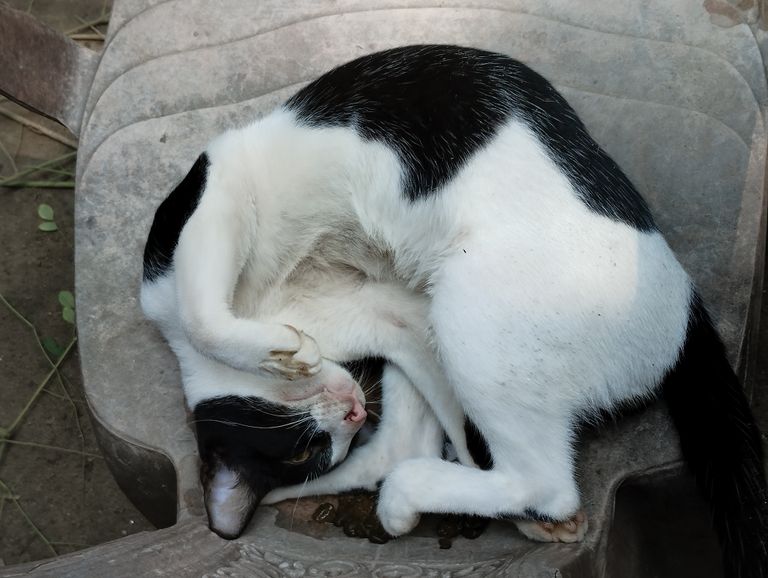

Where Do People Prefer to Live?
Where people choose to live is influenced by a variety of factors including lifestyle, culture, climate, job opportunities, and personal preferences. The world is a diverse place with different environments offering unique experiences. From bustling urban centers to serene rural landscapes, everyone has their own idea of what constitutes the perfect living environment. In this blog, we’ll explore some of the most common preferences when it comes to where people like to live, including cities, suburbs, and rural areas, and the factors that influence these choices.
- Urban Living: The Appeal of Cities
Cities are often the first choice for people who seek a fast-paced lifestyle with numerous opportunities. They are hubs of economic activity, offering a wide array of job options, educational institutions, and cultural experiences. Major cities like New York, London, Tokyo, and Dhaka attract people from all walks of life. Here are some of the reasons why people prefer urban living:
Job Opportunities: Cities are typically the economic powerhouses of a country. Many multinational companies, startups, and industries are headquartered in urban areas, creating a plethora of job opportunities. For those seeking career growth, cities often provide a better chance to climb the corporate ladder.
Cultural and Entertainment Options: Urban areas are known for their vibrant culture. Theatres, museums, art galleries, concerts, and diverse restaurants are abundant, allowing residents to experience a rich and varied lifestyle. Cities also tend to be more multicultural, offering people the chance to meet others from different backgrounds.
Convenience and Accessibility: One of the main attractions of city living is the convenience it offers. Public transport systems, healthcare facilities, shopping centers, and schools are often within close reach, reducing the need for long commutes. This accessibility makes cities ideal for people who prefer a lifestyle where everything is at their fingertips.
However, city life does come with its drawbacks. High cost of living, noise, pollution, and overcrowding can make urban living less desirable for some. The fast-paced nature of city life can also lead to stress and burnout.
- Suburban Living: A Balance of City and Rural Life
For those who want to escape the hustle and bustle of the city but still want to stay close to urban amenities, suburban living is often the perfect solution. Suburbs are residential areas located on the outskirts of major cities, offering a quieter and often more spacious living environment. Here’s why people opt for suburban life:
Space and Affordability: Compared to the city, the suburbs usually offer more affordable housing options with larger living spaces. Houses with gardens or yards are common in the suburbs, which is ideal for families or individuals who value having outdoor space.
Community Feel: Suburban areas often have a strong sense of community. Neighbors are more likely to know each other, and there are usually local events, parks, and recreational activities that foster a sense of belonging. This is appealing for families who want to raise children in a friendly and safe environment.
Proximity to Cities: Suburbs offer the best of both worlds. They provide a quieter lifestyle away from the chaos of the city while still being close enough to commute to urban areas for work or entertainment. This makes them an attractive option for those who want access to city amenities but prefer a slower pace of life.
On the downside, living in the suburbs can sometimes require a longer commute, especially if public transportation options are limited. This can lead to reliance on cars and increased travel time, which some people may find inconvenient.
- Rural Living: Peaceful and Natural Surroundings
Rural areas, often referred to as the countryside, are another living option that many people prefer. These areas are characterized by open spaces, farmlands, forests, and smaller populations. Rural living is ideal for those who seek tranquility and a close connection to nature. Here’s what attracts people to rural areas:
Serenity and Privacy: One of the biggest draws of rural living is the peace and quiet it offers. Away from the noise and pollution of the city, rural areas provide a calm and serene environment. People who enjoy solitude or a slower pace of life often find rural living to be a perfect match.
Connection to Nature: Rural areas are known for their natural beauty. Many people prefer to live in the countryside to enjoy fresh air, scenic landscapes, and outdoor activities like hiking, fishing, and farming. This lifestyle appeals to those who are passionate about nature and sustainability.
Lower Cost of Living: Housing and general living expenses in rural areas tend to be significantly lower than in cities or suburbs. This makes rural living more affordable for people who are looking to stretch their budgets or live a more minimalist lifestyle.
While rural living has its advantages, it also comes with challenges. Limited access to healthcare, education, and employment opportunities can make rural areas less attractive for some, particularly younger people or professionals. Isolation and a lack of social amenities can also be drawbacks for those who thrive on social interaction and convenience.
- Coastal and Mountainous Living: Niche Preferences
Some people prefer more niche environments like coastal or mountainous regions. These areas attract those who enjoy specific activities such as beachgoers, surfers, or hikers. Coastal living offers the benefit of beautiful ocean views, mild climates, and a relaxed atmosphere, which is why beach towns are popular destinations for both retirees and vacationers.
Mountainous areas, on the other hand, appeal to those who love outdoor adventure. People living in mountainous regions often enjoy skiing, snowboarding, hiking, and rock climbing. The crisp, fresh air and breathtaking views are additional incentives for people who prefer a more adventurous lifestyle.
- Factors Influencing Where People Prefer to Live
While personal preference plays a huge role in deciding where people prefer to live, several other factors influence this decision:
Career Opportunities: People often move to where their job prospects are the strongest. Cities tend to offer more diverse career options, but with the rise of remote work, some people are now opting to live in rural or suburban areas while maintaining city-based jobs.
Cost of Living: Affordability is a major factor in deciding where to live. Cities are generally more expensive, which pushes people to move to suburbs or rural areas where the cost of housing and everyday expenses are lower.
Quality of Life: Some people prioritize quality of life, such as access to green spaces, a sense of community, and overall well-being, over economic opportunities. Suburbs and rural areas often rank higher in terms of quality of life due to their peaceful environments and close-knit communities.
Climate and Environment: Weather conditions and geographical features can also influence living preferences. Some people prefer warmer climates and therefore choose coastal areas or tropical regions, while others are drawn to the cooler, crisper air of mountainous regions.
Family Needs: Families with children often prioritize good schools, safety, and space when choosing where to live. Suburban areas are usually preferred by families for this reason, offering a safer environment with family-friendly amenities.
Conclusion
There is no one-size-fits-all answer when it comes to where people prefer to live. The choice depends on individual priorities, lifestyle, and external factors like job opportunities and cost of living. While some may thrive in the dynamic energy of a city, others may seek the peace and solitude of rural living. Suburbs often offer a happy medium, combining the conveniences of city life with the tranquility of the countryside. Ultimately, the best place to live is one that aligns with your values, lifestyle, and personal happiness.
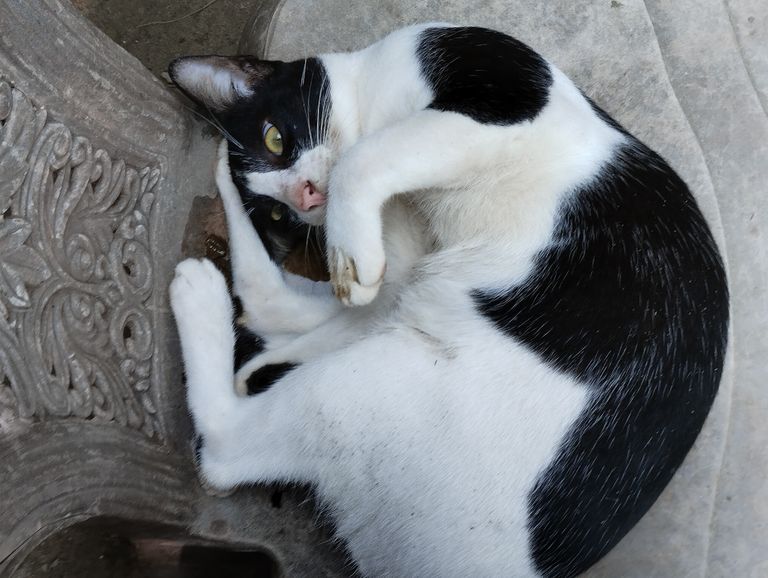
Understanding Feline Diseases: Common Illnesses in Cats
Cats are graceful, independent, and often enigmatic creatures that we love to have as companions. However, like any other living being, they can suffer from various illnesses, which, if not diagnosed and treated early, can lead to severe health problems. As responsible pet owners, it's essential to understand the common diseases that affect cats and how to prevent, identify, and treat them. This blog will explore some of the most common cat diseases, their symptoms, prevention methods, and treatment options.
- Feline Upper Respiratory Infections (URI)
Feline Upper Respiratory Infections are similar to the common cold in humans. This category of diseases is highly contagious among cats, especially in environments like shelters or multi-cat households.
Causes:
Viruses: Feline Herpesvirus (FHV) and Feline Calicivirus (FCV) are the most common causes of URIs.
Bacteria: Bordetella bronchiseptica and Chlamydia felis can also lead to respiratory infections.
Symptoms:
Sneezing
Coughing
Runny nose
Eye discharge
Fever and lethargy
Treatment:
Veterinarians often prescribe antibiotics for bacterial infections, and antivirals may be suggested for viral infections. It’s crucial to keep the cat hydrated and comfortable during recovery. In severe cases, hospitalization may be required.
Prevention:
Vaccination is the best defense against URIs. Keeping your cat away from infected cats and maintaining a clean environment can also help prevent the spread of infections.
- Feline Leukemia Virus (FeLV)
Feline Leukemia Virus (FeLV) is a life-threatening viral infection that suppresses the immune system of a cat, making them vulnerable to other infections and diseases, including cancer.
Causes:
FeLV is primarily spread through close contact, such as grooming or sharing food and water bowls with an infected cat. It can also be transmitted through bites or from mother cats to kittens during birth or nursing.
Symptoms:
Loss of appetite and weight loss
Persistent fever
Pale gums and jaundice
Swollen lymph nodes
Respiratory distress
Frequent infections
Treatment:
Unfortunately, there is no cure for FeLV, but supportive care can help improve the quality of life for infected cats. This includes regular veterinary check-ups, keeping the cat indoors to reduce exposure to other infections, and maintaining a healthy diet.
Prevention:
Vaccination against FeLV is available and highly recommended, especially for outdoor cats. Preventing contact with FeLV-positive cats is also crucial.
- Feline Immunodeficiency Virus (FIV)
Feline Immunodeficiency Virus (FIV) is similar to HIV in humans and compromises the immune system of cats, making them more susceptible to infections and diseases.
Causes:
The virus is transmitted primarily through bite wounds from infected cats, meaning outdoor cats that engage in fights are at higher risk. FIV can also be spread from a mother cat to her kittens.
Symptoms:
Recurrent infections
Poor coat condition
Weight loss
Inflammation of the gums and mouth
Diarrhea
Fever
Treatment:
Like FeLV, there is no cure for FIV. Treatment focuses on managing secondary infections and maintaining overall health. Infected cats can still live long, fulfilling lives with proper care and regular veterinary monitoring.
Prevention:
The best way to prevent FIV is to keep your cat indoors, reducing the risk of catfights. Regular testing and spaying/neutering cats can also help control the spread of FIV.
- Feline Infectious Peritonitis (FIP)
Feline Infectious Peritonitis (FIP) is a deadly disease caused by certain strains of the feline coronavirus. Not all cats exposed to the virus will develop FIP, but those who do often face a grim prognosis.
Causes:
FIP develops when the feline coronavirus mutates in a cat's body. The exact cause of the mutation is not well understood, but it is more common in environments with many cats.
Symptoms:
There are two forms of FIP:
Wet form: Characterized by fluid accumulation in the abdomen or chest, leading to swelling and difficulty breathing.
Dry form: Causes organ damage, leading to symptoms like jaundice, weight loss, and neurological issues.
Treatment:
FIP is almost always fatal, and treatment focuses on making the cat as comfortable as possible. However, recent experimental treatments have shown promise in managing the disease.
Prevention:
There is currently no widely effective vaccine for FIP, so prevention focuses on reducing the risk of coronavirus exposure, especially in multi-cat environments.
- Hyperthyroidism
Hyperthyroidism is a common condition in older cats, caused by the overproduction of thyroid hormones. It leads to an increased metabolic rate, which can cause various health problems.
Causes:
The exact cause of hyperthyroidism is not well understood, but it is often due to benign tumors on the thyroid gland.
Symptoms:
Weight loss despite increased appetite
Hyperactivity
Increased thirst and urination
Vomiting and diarrhea
Rapid heart rate
Treatment:
Treatment options include medication to control thyroid hormone production, radioactive iodine therapy to destroy abnormal thyroid tissue, or surgery to remove the thyroid gland. Dietary management may also help control the condition.
Prevention:
There is no specific prevention for hyperthyroidism, but regular veterinary check-ups can help catch the condition early.
- Diabetes Mellitus
Diabetes Mellitus occurs when a cat’s body cannot properly regulate blood sugar levels due to insufficient insulin production or the body’s inability to use insulin effectively.
Causes:
Diabetes in cats is often related to obesity, age, and inactivity. Certain breeds, like Burmese cats, may also have a genetic predisposition.
Symptoms:
Increased thirst and urination
Weight loss despite increased appetite
Lethargy
Vomiting
Poor coat condition
Treatment:
Treatment usually involves daily insulin injections and a carefully monitored diet. Regular blood sugar testing is essential to ensure the cat’s levels remain stable.
Prevention:
Preventing obesity through proper diet and regular exercise can help reduce the risk of diabetes in cats. Regular veterinary visits can also help in early detection.
- Dental Disease
Dental disease is common in cats and can lead to pain, tooth loss, and even systemic infections if not treated. The most common dental issues include gingivitis, periodontal disease, and tooth resorption.
Causes:
Dental disease in cats is often caused by plaque and tartar buildup, poor diet, and genetics.
Symptoms:
Bad breath
Difficulty eating or chewing
Swollen, red, or bleeding gums
Drooling
Loose or missing teeth
Treatment:
Treatment may involve professional dental cleaning, tooth extraction, and medications to manage infections or pain. Maintaining good oral hygiene with regular brushing can help prevent dental disease.
Prevention:
Brushing your cat’s teeth regularly, providing dental treats or toys, and scheduling routine dental cleanings with a veterinarian can help prevent dental issues.
Conclusion
Caring for a cat means staying vigilant about its health and well-being. Regular veterinary check-ups, proper vaccinations, a balanced diet, and a clean living environment can go a long way in preventing many feline diseases. Early detection of symptoms is key to ensuring that your cat lives a long, healthy, and happy life. Always consult your veterinarian if you notice any unusual behavior or symptoms in your cat, as timely intervention can make all the difference.
A very cute cat 🐈⬛
Thanks for comment